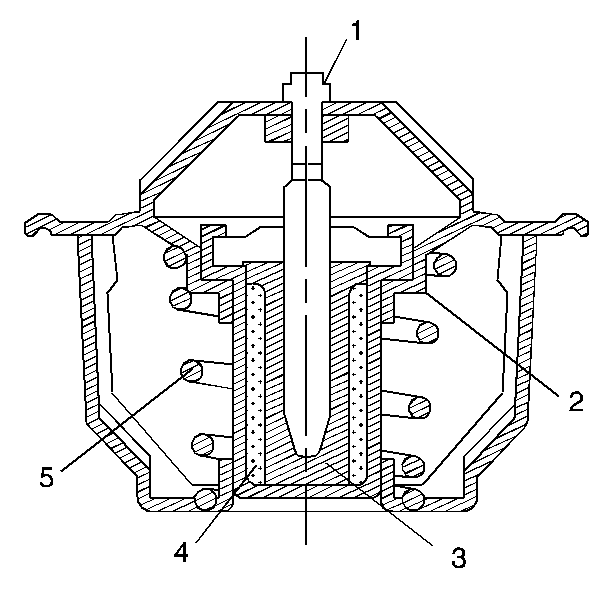Thermostat Description
The 2.4L (4 cyl.) and the 3.1L (6 cyl.) engines use a wax pellet-type thermostat. On the 2.4L engine, the thermostat is in the coolant inlet passage. On the 3.1L engine, the thermostat is in the coolant outlet passage. The thermostat does the following functions:
| • | Controls the flow of coolant |
| • | Provides fast engine warm-up |
| • | Regulates the coolant temperature |

A wax pellet, or power element, (4) in the thermostat expands when heated, and contracts when cooled. The pellet element connects through a piston (1) to a valve (2). When the pellet element is heated, pressure is exerted against a rubber diaphragm (3) which forces the valve to open. As the element is cooled, the contraction allows a spring (5) to close the valve. While the coolant is cold, the valve remains closed. This prevents circulation of coolant through the radiator. At this point, coolant is only allowed to circulate through the engine to quickly and evenly warm the engine.
As the engine warms, the pellet element expands and the thermostat valve opens. This permits coolant to flow through the radiator, where the heat is passed through the radiator walls. This opening and closing of the thermostat permits enough coolant to enter the radiator, keeping the engine within specified temperature limits.
The 3.1L engine uses a 91°C (195°F) thermostat. The 2.4L engine uses a 82°C (180°F) thermostat. Do not use a thermostat rated above these control temperatures.
A higher-temperature thermostat does not offer a faster warm-up, because the valve remains tightly closed until the thermostat reaches the control temperature. This is much like a lower-temperature thermostat.
Always install the thermostat with the pointed end facing the radiator. Incorrect installation could cause the engine to overheat.
